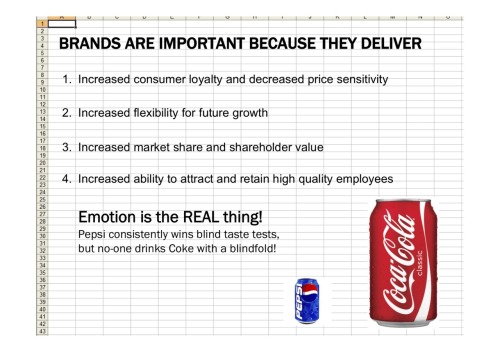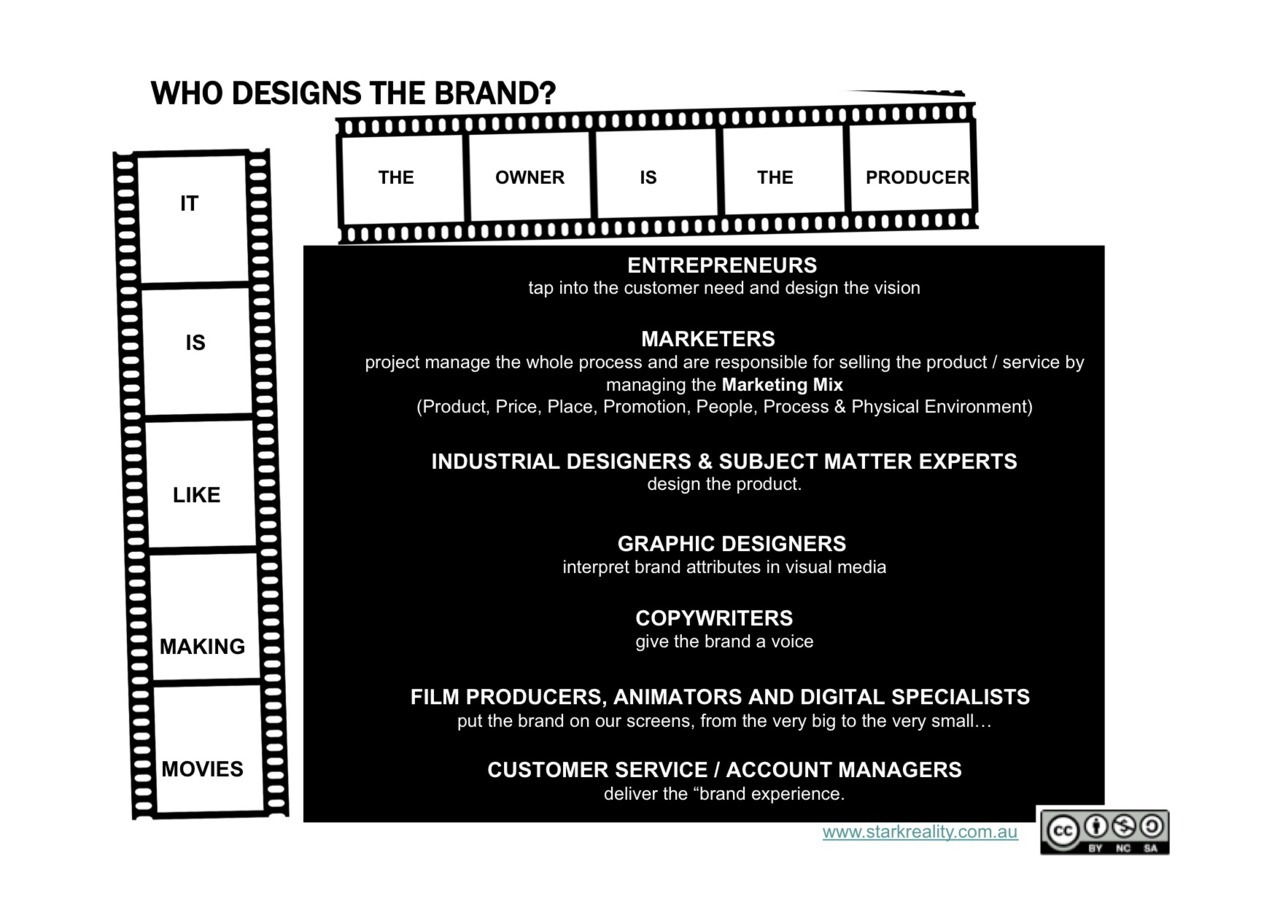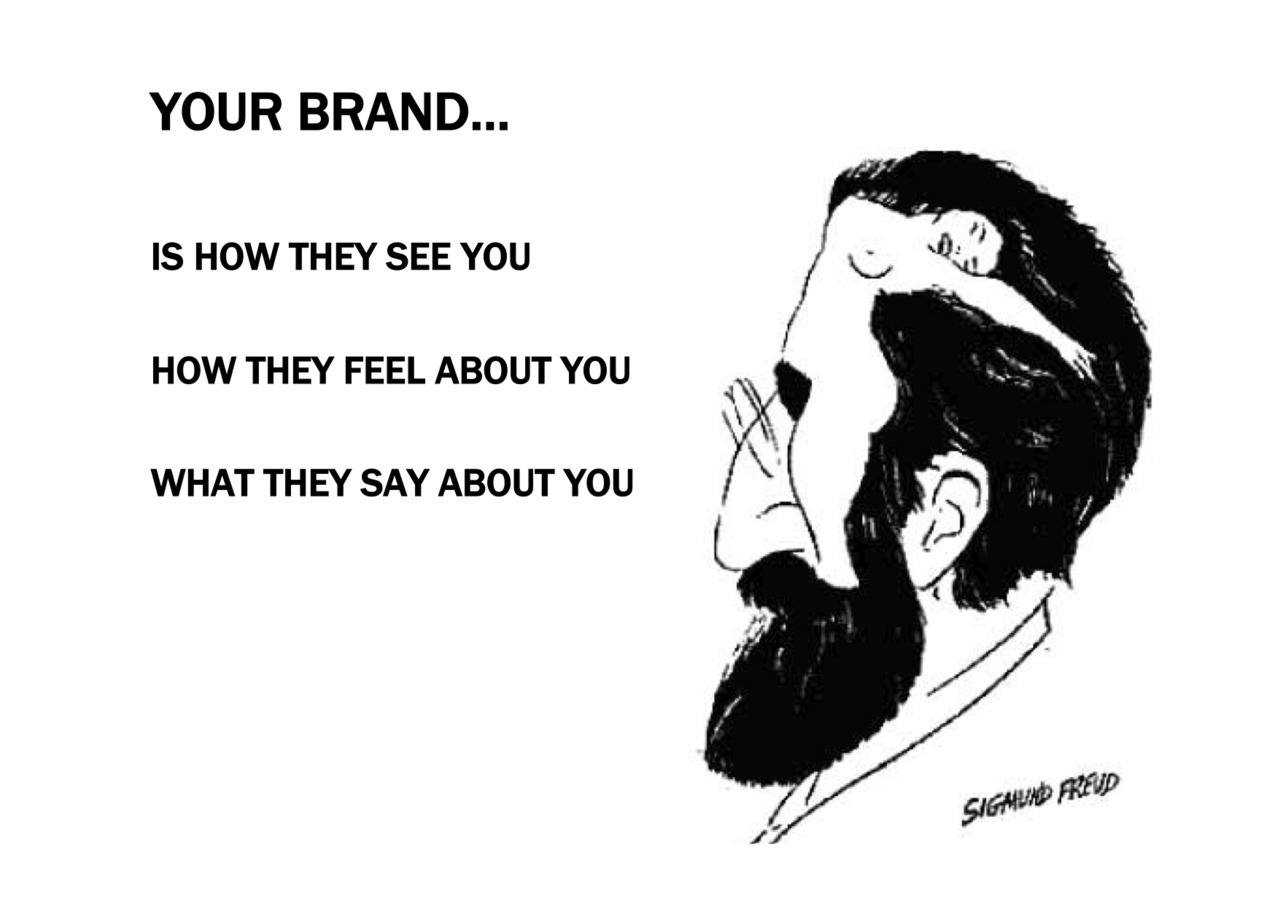
by admin | Jan 18, 2011 | Blog, Promotion, Strategy

People are emotional beings.
They feel first, think second.
Feelings affect rational thought.
Most purchase decisions are emotional, justified with rational thought later.
In 2002 Daniel Kahneman of Princeton was awarded the Nobel Prize for Economics. His work, for the first time, recognized that it’s the power of emotions and a person’s psychological makeup that are the key determining factors in buying behaviour.

by admin | Jan 18, 2011 | Blog, Strategy
Brand will become the most powerful strategic tool since the spreadsheet
Marty Neumeier, author “The Brand Gap”

by admin | Jan 17, 2011 | Blog, Design

Brand Design is a team effort – like making movies. Many people should be credited with the creation.
The design of a brand requires serious research and understanding of your customer and prospect needs, examination of what is being offered by your competitors and how those offers are being communicated. Business owners need to answer these questions and provide them in an executable brief to their designers.
This is the job of your marketing people (in a small business it is the owner) or their marketing agency or consultant. 

by admin | Jan 17, 2011 | Blog, Strategy

A brand image is a collection of perceptions
in the mind of the consumer.
The sum total of each customer’s
experience with your organization.
The investment into the Perceptions
your consumers have about your
product or service.
Perception is Reality. Stark Reality.
People tend to stay away from empty restaurants while they regularly line up and wait in the freezing cold to “get into” a popular club, which in some cases may be empty inside, hence creating the perception of scarcity and popularity with their “artificial” queue.
Existing perceptions about Quality and Price are part of the scarcity perception:
- Quality is never cheap.
- You get what you pay for.
- If it is expensive it must be valuable.
As marketers we must work with the existing perceptions our audience holds about our products and services. Changing those perceptions takes a long time, great amounts of money and a very good idea communicated in a very creative way!

by admin | Jan 16, 2011 | Blog, Promotion, Strategy

Image via Wikipedia
Where are your customers?
Where can you REACH them most cost effectively?
What are they watching, reading, listening to?
ESTABLISH:
Budget – Marketing Budget as a rough rule of thumb is 10% of Sales
Reach – don’t try to talk with too many prospects / customers
Frequency – make sure to repeat your message frequently enough within the set purchase cycle, e.g.: twice per month
Continuity – and pursue your dialogue for long enough, e.g. 6 month campaign
The top 10 marketing tactics for reaching an audience for SME’s are*: (mainly B2B Professional Services and Industrial companies)
*The individual circumstances of each organization may alter the order of this list drastically and the list below is a guide only. As an example, for a small new manufacturing business, Packaging may be their only marketing vehicle and can be used with great success if it is designed correctly.
1. Networking
- Physical – Industry Associations, Trade Shows, BNI, etc
- Virtual (Social Media: LinkedIn, Facebook, etc)
2. Website / Blog, Online Video
3. Search Engine Marketing
- Paid Search / Pay Per Click
- Search Engine Optimisation
- Banner Ads
4. Email
5. PR – Traditional and Online
6. Direct Mail
7. Point of Sale (for Retailers and Small FMCG Manufacturers)
8. Packaging
9. Trade Press / Local Paper / Niche Magazines
10. Outdoor and Out Of Home / Ambient








Recent Comments